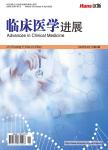版权所有:内蒙古大学图书馆 技术提供:维普资讯• 智图
内蒙古自治区呼和浩特市赛罕区大学西街235号 邮编: 010021

作者机构:扬州大学附属医院儿科江苏 扬州 扬州大学医学院江苏 扬州
出 版 物:《临床医学进展》 (Advances in Clinical Medicine)
年 卷 期:2025年第15卷第1期
页 面:1595-1604页
学科分类:1002[医学-临床医学] 100202[医学-儿科学] 10[医学]
基 金:江苏省卫生健康委员会科研项目面上项目(M2021076) 扬州医学重点学科项目(YZYXZDXK-015)
主 题:新型冠状病毒 社区获得性肺炎 病原学 儿童 靶向高通量测序
摘 要:目的:基于靶向高通量测序技术(Targeted Next Generation Sequencing, TNGS)分析新型冠状病毒(简称新冠病毒)大流行后扬州地区因社区获得性肺炎(community acquired pneumonia, CAP)住院儿童感染的病原体,了解政策改变后儿童CAP病原体感染分布情况。方法:回顾性分析2023年6月至2024年5月因CAP于儿童诊治量占扬州地区1/2的扬州大学附属医院儿科住院治疗患儿的呼吸道多种病原体靶向测序检查结果。分析儿童在不同年龄、季节间的呼吸道病原体感染情况。结果:1161例(上呼吸道样本1137例 + 肺泡灌洗液样本24例) CAP患儿中致病性A类病原体检出1087例(93.63%)、致病性B类病原体检出664例(57.19%)。A类病原体中:单一感染者71.85% (781/1087),混合感染者28.15% (306/1087),常见混合感染MP + 鼻病毒(HRV)阳性率5.98% (65/1087);人呼吸道合胞病毒(RSV)、人副流感病毒3型(PIV3)、人偏肺病毒(HMPV)阳性率随着年龄的增长呈下降趋势;学龄前期和学龄期儿童感染病原体主要是MP,MP感染仍以夏秋季最高,冬季最低;近1年MP感染耐药率为88.03% (618/702),基因变异位点以A2063G为主(100%)。B类病原体中:感染以革兰阴性菌为主(582/1161, 50.13%),流感嗜血杆菌为主要代表;≤2岁年龄组感染率最高,≥6岁感染率最低。结论:新冠病毒大流行后对CAP呼吸道病原体感染流行趋势带来改变。扬州地区儿童CAP感染的季节性与以往不同,RSV感染仍具有典型的年龄、季节性模式,MP感染季节性并未改变,感染年龄趋于低龄化。MP感染耐药率明显升高,基因变异均以A2063G为主。TNGS检测技术具有较高敏感性,可检测出机会致病菌,以流感嗜血杆菌最多见,有利于临床早期诊断及精准治疗。Objective: Targeted Next Generation Sequencing (TNGS) will be used to investigate the pathogens causing community-acquired pneumonia (CAP) in hospitalized children in Yangzhou after the SARS-CoV-2 pandemic. The goal is to comprehend the spread of CAP pathogens among children following the policy change. Methods: We conducted a retrospective analysis of the target sequencing test findings for several respiratory infections in children admitted to the Department of Pediatrics at Yangzhou University Hospital between June 2023 and May 2024. This period accounts for 50% of all pediatric consultations in Yangzhou. Children’s respiratory pathogen infections were examined at various age points and times of year. Results: There were 1161 instances of CAP in children (1137 upper respiratory tract samples plus 24 alveolar lavage fluid samples), and 1087 pathogenic class A pathogens (93.63%) and 664 pathogenic class B pathogens (57.19%) were found in those samples. Class A pathogens: 71.85% (781/1087) were single infections, 28.15% (306/1087) were mixed infections, and the common mixed infections MP + rhinovirus (HRV) positive rate was 5.98% (65/1087);the positive rate